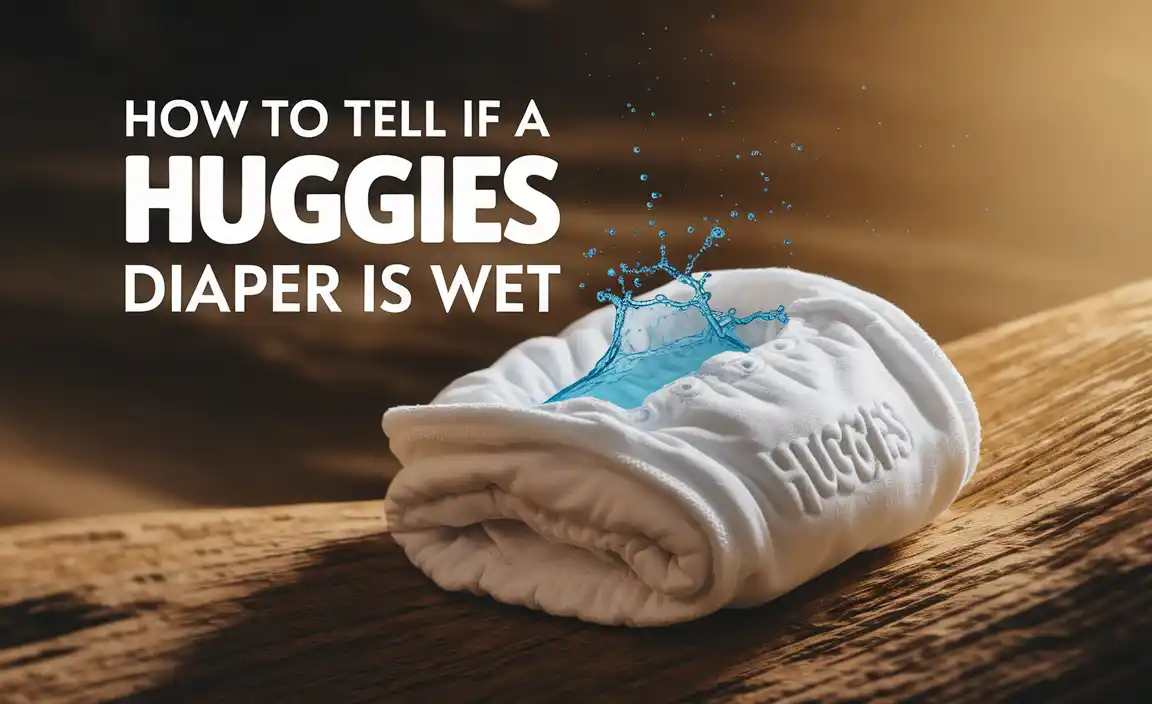Adult diapers for urinary incontinence offer discreet, reliable protection, significantly improving comfort and confidence. Choosing the right type involves understanding absorbency levels, fit, and features like odor control, ensuring peace of mind for daily life and travel.
Navigating the world of adult diapers for urinary incontinence might seem daunting at first, but it doesn’t have to be. Many people experience leakage, and finding the right product can make a world of difference in feeling secure and comfortable throughout the day. Whether you’re at home, on the go, or embarking on a thrilling adventure, the correct protection is key to enjoying life without worry. This guide is designed to gently walk you through everything you need to know. We’ll break down the options, explain how to find the perfect fit, and offer tips for discreet use, so you can move through your travels and daily life with renewed confidence.
Understanding Urinary Incontinence and Adult Diapers
Urinary incontinence is the involuntary loss of urine. It’s a common condition that can affect people of all ages, though it becomes more prevalent as we get older. It’s not a disease itself but rather a symptom of an underlying issue, which can range from temporary irritations to more persistent conditions. The causes are diverse and can include medical conditions, physiological changes, and even certain medications.
Thankfully, modern adult diapers, also known as incontinence briefs or pads, are designed to manage this effectively. They are far from the bulky products of the past. Today’s options are discreet, comfortable, and offer excellent absorbency, allowing individuals to maintain their independence and active lifestyles. For travelers, they are an essential tool for ensuring a stress-free journey, no matter the destination or duration.
Types of Urinary Incontinence
Understanding the different types of incontinence can help in selecting the most appropriate product. The type of incontinence you experience can influence the absorbency and style of diaper that will work best for you:
- Stress Incontinence: Leaking urine when you cough, sneeze, laugh, lift, or exercise.
- Urge Incontinence: A sudden, strong urge to urinate, often followed by involuntary leakage. This is sometimes called an overactive bladder.
- Overflow Incontinence: Leaking urine because the bladder doesn’t empty completely.
- Functional Incontinence: Physical or mental impairments prevent you from reaching the toilet in time.
- Mixed Incontinence: A combination of two or more types of incontinence.
Choosing the Right Adult Diapers for Urinary Incontinence
Selecting the right product is crucial for comfort and effectiveness. It’s not a one-size-fits-all situation. Let’s explore the key factors to consider.
Factors to Consider When Buying Adult Diapers
When you’re looking for adult diapers for urinary incontinence, several features can make a big difference in your daily comfort and security. Think about these points:
- Absorbency Level: This is perhaps the most critical factor. Incontinence products are rated for light, moderate, heavy, or overnight absorbency. Matching this to your needs is paramount. Too little absorbency leads to leaks; too much can be bulky and uncomfortable.
- Size and Fit: A proper fit is essential to prevent leaks and ensure comfort. Look for products that specify waist or hip measurements. A snug fit around the legs and waist without being too tight is ideal.
- Style of Product: There are several types, including disposable briefs (like adult diapers with tabs), pull-on underwear, and bladder control pads. Each has its benefits depending on your mobility and the severity of your incontinence.
- Odor Control: Many modern products include advanced odor control technology to neutralize smells, offering an added layer of discretion and confidence.
- Material and Breathability: Soft, breathable materials can help prevent skin irritation and discomfort, especially for those who need to wear protection for extended periods. Look for materials that wick moisture away from the skin.
- Discretion: The thickness and rustle of a product can affect how discreet it is under clothing. Many brands offer very slim and quiet options.
Types of Incontinence Products
The market offers a variety of incontinence products, each suited for different needs and preferences. Here’s a breakdown:
1. Disposable Briefs (Adult Diapers with Tabs)
These are what most people picture when they think of adult diapers. They have refastenable tabs on the sides, allowing for a secure, adjustable fit. They are often the highest absorbency option and are ideal for those with moderate to severe incontinence or for overnight use.
- Pros: High protection, adjustable fit, easy to change for caregivers.
- Cons: Can be bulkier than other options, may be less discreet.
2. Pull-On Protective Underwear
These look and feel much like regular underwear but have a built-in absorbent pad. They are designed to be pulled on and off like regular underwear, making them a good choice for individuals who are more mobile and can manage their own toileting needs. They are suitable for light to moderate incontinence.
- Pros: Discreet under clothing, feel like regular underwear, good for active individuals.
- Cons: Less adjustable fit than briefs, absorbency may be lower than high-absorbency briefs, can be harder to change when wet if mobility is limited.
3. Bladder Control Pads and Liners
These are worn inside regular underwear and are designed for light to moderate urinary leakage. They come in various shapes, sizes, and absorbency levels, similar to menstrual pads. They offer the most discreet option for minor leaks.
- Pros: Very discreet, easy to change, cost-effective for light incontinence.
- Cons: Not suitable for moderate to heavy incontinence, can shift in place if not positioned correctly.
4. Reusable/Washable Incontinence Products
These are becoming more popular as an eco-friendly and potentially cost-effective alternative. They typically consist of a waterproof outer shell and absorbent inserts. They require washing after each use.
- Pros: Environmentally friendly, can save money in the long run, comfortable materials.
- Cons: Require regular washing, initial investment can be higher, generally less absorbent than top-tier disposables for severe incontinence.
Sizing Guide for Adult Diapers
An improper fit is a primary cause of leaks. Most adult diapers and protective underwear are sized based on waist or hip circumference. Always check the manufacturer’s specific sizing chart:
| Product Type | Measurement Area | Example Sizes (Manufacturer Dependent) |
|---|---|---|
| Disposable Briefs (Tabs) | Waist/Hips (whichever is larger) | Medium: 32″-44″, Large: 44″-58″, XL: 58″+ |
| Pull-On Protective Underwear | Waist/Hips (whichever is larger) | Small: 28″-36″, Medium: 34″-46″, Large: 42″-54″ |
When measuring, use a flexible tape measure. Measure around your natural waistline or the fullest part of your hips. Ensure the tape is snug but not digging into your skin. If you fall between sizes, it’s generally recommended to try the smaller size for a snugger fit to prevent leaks, but some prefer to size up for more room. It’s often best to order a sample pack if available.
How to Use Adult Diapers Effectively
Using adult diapers correctly ensures maximum protection and comfort. Here’s a simple step-by-step for the most common type: disposable briefs with tabs.
Step-by-Step Guide: Changing a Disposable Brief
- Gather Supplies: You’ll need a clean disposable brief, gloves (optional but recommended for hygiene), a disposal bag, wipes, and potentially a barrier cream if recommended by a healthcare provider.
- Positioning: Lie down on your back. If you can, gently roll your body from side to side to help with positioning.
- Prepare the Brief: Unfold the brief and ensure the inner leg cuffs are pulled up and outward. This is crucial for leak protection.
- Place the Brief: Slide the back half of the brief under your hips and buttocks. Ensure the outer waistband is roughly level with your waist.
- Fasten the Tabs: Bring the front of the brief up between your legs. Bring one side tab around to the front to secure it to the designated landing area. Repeat with the other side. Adjust the tabs for a snug but comfortable fit – you should be able to fit one or two fingers between the waistband and your skin.
- Check Fit: Ensure the brief is snug around the thighs and waist, with no gaps. Check that the inner leg cuffs are still properly in place and are not folded down.
- Dispose Properly: Roll the soiled brief into a ball, secure it with the tabs, and place it in a disposal bag.
For pull-on underwear, the process is simpler, much like changing regular underwear, but requires ensuring the absorbent core is correctly positioned over the area of leakage.
Tips for Discreet Use and Daily Management
Living with incontinence doesn’t mean sacrificing discretion or an active social life. With the right strategies and products, you can feel confident in any situation.
Maintaining Confidence and Comfort
- Choose the Right Product: As discussed, select products for your specific absorbency needs and that fit well. Slimmer products are often more discreet.
- Layer Your Clothing: Wearing longer tops, appropriately fitted pants, or skirts can help conceal the outline of a brief or pull-on underwear. Avoid very tight-fitting lower garments if you are concerned about bulk.
- Utilize Odor Control: Many products have excellent odor-locking technology. If you are still concerned, disposable, scented disposal bags can be helpful for used products when away from home.
- Regular Changes: Changing your product regularly, even if it doesn’t feel full, can significantly boost comfort and prevent skin irritation and odors.
- Keep a Small Kit: For outings, pack a small bag with a spare product, wipes, and a disposal bag. Knowing you are prepared can ease anxiety.
- Stay Hydrated: While it might seem counterintuitive, restricting fluids can worsen some types of incontinence and increase the concentration of urine, which can irritate the skin. Drink enough water throughout the day, as recommended by health professionals. For more on hydration and health, the Centers for Disease Control and Prevention (CDC) offers excellent general guidance.
- Skin Care: Protecting your skin is vital. Use a gentle cleanser and consider a barrier cream to prevent irritation, especially if you experience frequent leaks.
Adult Diapers and Travel
Travel is a passion of mine, and I’ve learned that being prepared is the key to a smooth and enjoyable trip, especially when managing incontinence.
Flying with Incontinence
Air travel often involves long periods of sitting and limited access to restrooms. Adult diapers are invaluable for flying.
- Pack Enough: Bring more products than you think you’ll need. Delays happen, and you don’t want to be caught short.
- Carry-On is Best: Keep your supply of adult diapers and other essential personal care items in your carry-on luggage. This protects against lost checked bags.
- Discreet Bagging: Using opaque bags to store your incontinence products can offer peace of mind.
- Airline Restrooms: Airplane restrooms are small. Practice changing quickly and efficiently if you anticipate needing to do so. Pull-on underwear can sometimes be easier to manage in tight spaces.
- Inform Travel Companions (If Applicable): If you’re traveling with someone, letting them know you use incontinence products can ensure they can offer support if needed without you feeling embarrassed.
Road Trips and Long Journeys
Road trips offer more flexibility but still require preparation:
- Scheduled Stops: Plan restroom stops every few hours. This helps manage product changes and allows for breaks.
- Comfort is Key: Choose absorbent, breathable products that won’t chafe during long periods of sitting.
- Easy Access: Keep a small travel kit within reach in the car for quick changes when you stop.
When to Seek Medical Advice
While adult diapers are excellent management tools, they don’t treat the underlying cause of incontinence. If you are experiencing new or worsening incontinence, it’s important to consult a healthcare professional. They can help identify the cause and discuss treatment options, which might include:
- Behavioral Therapies: Like bladder training and timed voiding.
- Pelvic Floor Muscle Exercises: Often called Kegels, these can strengthen muscles that help control urine flow.
- Medications: To relax an overactive bladder.
- Medical Devices: Such as catheters or pessaries.
- Surgery: In some cases, surgical interventions may be an option.
The National Institute on Aging, part of the U.S. Department of Health and Human Services, provides a good overview of urinary incontinence in older adults, which you can find on their website. They emphasize that incontinence is treatable and not a normal part of aging.
Product Comparison Table: Absorbency & Features
To help you visualize the differences, here’s a simplified comparison of common product types. Remember that specific product lines within brands will vary.
| Product Type | Typical Absorbency Range | Key Features | Best For |
|---|---|---|---|
| Bladder Control Liners/Pads | Light to Moderate Leakage | Discreet, adhesive backing, variety of sizes. | Occasional drips, light leaks during exertion. |
| Pull-On Protective Underwear | Moderate to Heavy Leakage | Feels like regular underwear, elastic waist, discreet. | Active individuals, moderate to heavy leaks, independence. |
| Disposable Briefs (Tabs) | Moderate to Maximum/Overnight | Adjustable tabs, high absorbency, leg cuffs for leak protection. | Severe incontinence, overnight use, mobility challenges, caregiver assistance. |
| Reusable (Washable) Briefs/Pads | Light to Heavy (depending on inserts) | Reusable outer shell, absorbent inserts, eco-friendly. | Environmentally conscious, long-term cost savings, moderate to heavy needs. |
Frequently Asked Questions (FAQs)
1. How can I tell if I’m wearing the right size adult diaper?
A properly sized diaper should fit snugly but comfortably around your waist and thighs. You should be able to slip one or two fingers between the waistband and your skin. There should be no gapping around the leg cuffs, and the product shouldn’t feel overly tight or pinch.
2. Are adult diapers noticeable under clothing?
Modern adult diapers are much more discreet than older versions. For light to moderate incontinence, pull-on underwear or slim-fit briefs are very unnoticeable. For heavier needs, briefs can be slightly more apparent, but with careful clothing choices (like looser pants or longer tops), they can be effectively hidden.
3. How often should I change my adult diaper?
It’s generally recommended to change your diaper every 4-6 hours, or as soon as it becomes wet or soiled. Frequent changes are essential for skin health, preventing irritation and odor. For heavy leaks, more frequent changes might be necessary.
4. Can I swim or exercise while wearing adult diapers?
Generally, disposable adult diapers are not designed for swimming, as they will absorb water and become very heavy and lose absorbency. Specific waterproof incontinence swimwear is available for swimming. For exercise, pull-on protective underwear or high-absorbency briefs can be very effective, provided they fit well and are suitable for the level of activity and potential leakage.
5. Are there any alternatives to disposable adult diapers?
Yes, alternatives include pull-on protective underwear, absorbent pads and liners, and reusable (washable) incontinence products. Each offers different levels of discretion, absorbency, and convenience.
6. What’s the difference between a diaper and protective underwear?
Disposable briefs, often called diapers, use refastenable tabs for an adjustable fit and are typically used for moderate to heavy incontinence or overnight. Protective underwear is designed to be pulled on and off like regular underwear, offering more discretion and ease of use for individuals who are more mobile and manage their own toileting.








